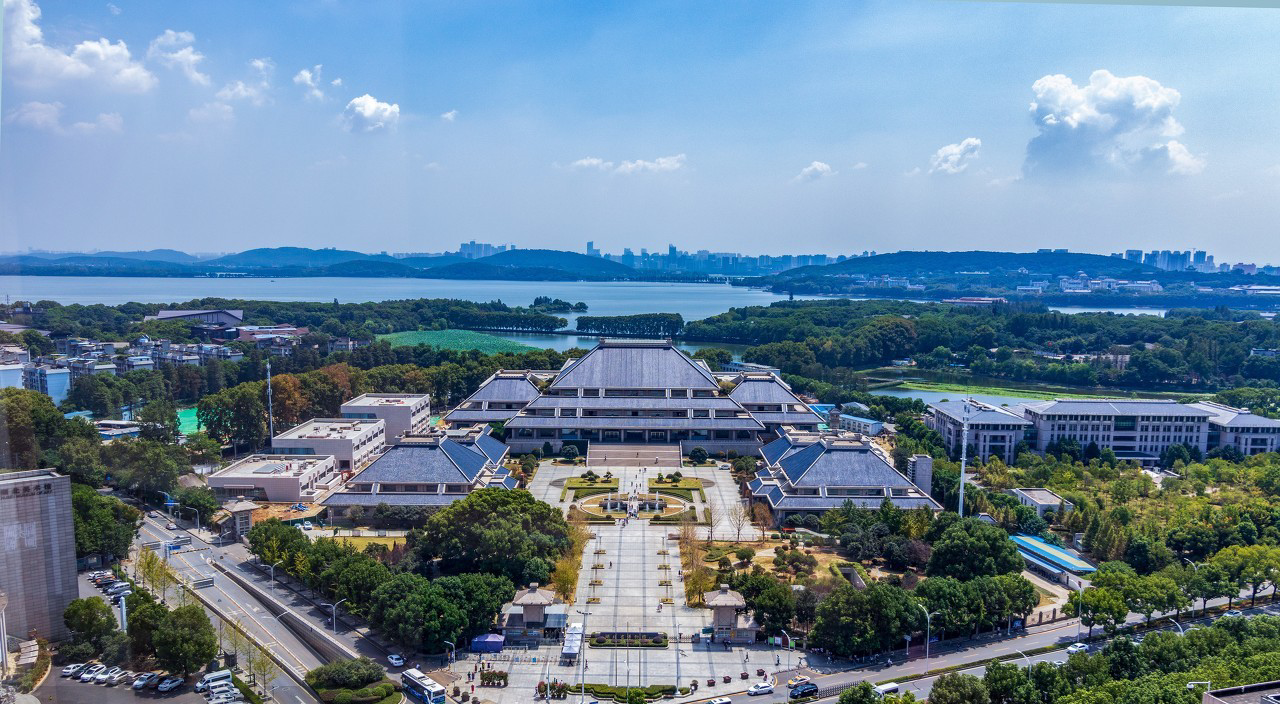Chinese Name: 湖北省博物馆 Pronunciation: Húběishěng Bówùguǎn
Recommended Time for Visit: 2-3 Hours
Best Visiting Season: All the year
Occupied Area: 81,909 square meters
Building Time: 1953
Building Function: To collect and exhibit cultural relics to the public.
Address: No.160, East Lake Road, Wuchang District, Wuhan, Hubei Province
Popular Activities: Plenty of temporary and permanent exhibitions, and ancient music performance.
Opening Hours: 09:00-17:00 (No admission after 16:00; the museum is closed on Monday (except legal holidays) and New Year’s Eve.)
| Ancient Music Playing | Price |
| Adults & children (taller than 1.4 meters) | 30 yuan |
| Seniors over 65 (with valid ID card) | 20 yuan |
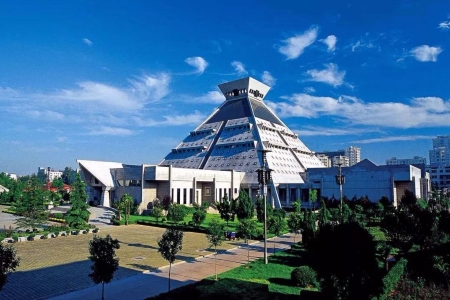
Hubei Provincial Museum is one of the eight national museums jointly constructed by the central and local governments, a national first-class museum, and a key scientific research base of the State Administration of Cultural Relics for the protection of unearthed wood lacquerware. It is also a national comprehensive museum with the largest scale, the richest collection, and the strongest scientific research strength in Hubei Province. In 1960, Dong Biwu, the then Vice President of the People’s Republic of China, visited the museum and wrote the name for it.
Ranked as a 5-A Level Scenic Spot in China, Hubei Provincial Museum boasts the biggest exhibition hall of ancient musical instruments. There are more than 260,000 sets of existing cultural relics, including 945 sets of national first-level cultural relics and 16 sets of national treasures.
The museum is characterized by bronze ware, lacquered wooden articles, and Jiandu(articles made by bamboo or wood used for writing). And the four major treasures of the museum are the Sword of Goujian, Chime-bells from the Tomb of Marquis Yi (about 475 BC-about 433 BC) of the Zeng State (ended in about 339 BC), Human Skull Fossils from Yunxian County, Hubei Province, and Blue and White Plum Vase Decorated with Four-love Pictures on in Yuan Dynasty.
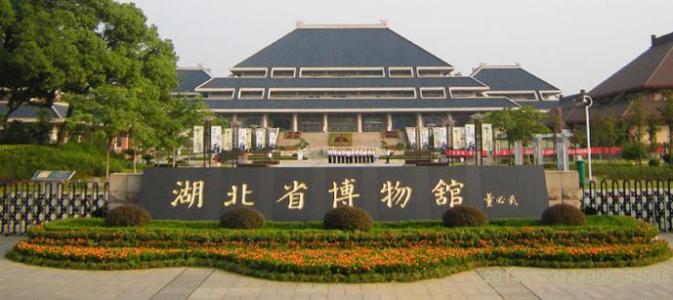
The predecessor of Hubei Provincial Museum is the People’s Science Museum of Hubei Province, which was built at the beginning of the founding of the People’s Republic of China.
In 1953, Hubei Provincial Museum (Preparatory Office) was set up. In September, Hubei Cultural Relics Management Committee and Hubei Cultural Relics Sorting and Preservation Committee merged, and Hubei Provincial Cultural and Historical Research Center was built.
In 1954, the government of Hubei Province resumed the Cultural Relics Management Committee, which co-located with Hubei Provincial Museum (Preparatory Office).
In 1958, the Hubei Cultural Relics Management Committee changed its name to Hubei Cultural Relics Management Office.
In 1959, Hubei Provincial Museum (Preparatory Office) was relocated to the East Lake Scenic Area of Wuchang. The government began to build the exhibition hall of Hubei Provincial Museum.
In 1956, it was relocated to Shuiguohu Lake.
In 1960, it was relocated to the shore of East Lake in Wuchang city.
In 1963, it changed the name officially to Hubei Provincial Museum.
In 1999, the Chime-bells Hall, with a total area of 3,000 square meters, was built and opened to the public.
In 2005, the Hall of Chu Culture was built and open to the public.
In 2009, it was reputed as a national museum by the State Administration of Cultural Relics.
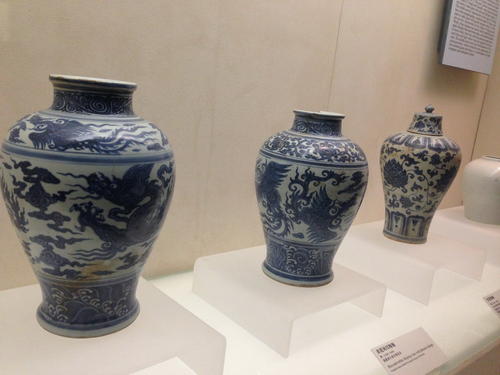
It was unearthed from the tomb of King Yingjing in 2006 with a height of 38.7cm, a mouth diameter of 6.4cm, and a bottom diameter of 13cm. The top of the body is decorated with phoenix and peony, and the middle of the body is decorated with “four-love pictures” (四爱图), namely Wang Xizhi’s love of orchid (a famous calligrapher in the Eastern Jin Dynasty, 317-420), Tao Yuanming’s love of chrysanthemum (a famous poet in the Eastern Jin Dynasty), Zhou Dunyi’s love of lotus (a famous Neo-Confucian in the Northern Song Dynasty, 960-1127), Lin Hejing’s love of plum and crane (a famous poet in the Northern Song Dynasty). It is a rare and exquisite blue and white porcelain of the Yuan Dynasty unearthed by scientific excavation.
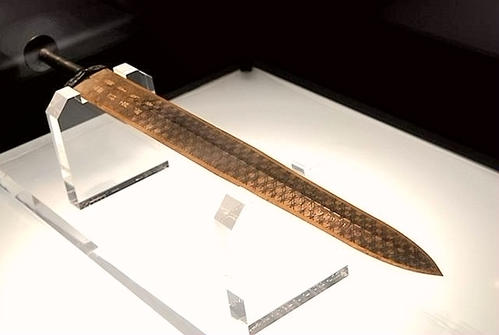
In the late Spring and Autumn Period (770BC-476BC). The sword, with a length of 55.7 cm and a width of 4.6cm, is stainless for thousands of years, and the blade of the sword is dotted with diamond patterns. And it was unearthed from No.1 Tomb at Jiangling Wangshan in Hubei province in 1965.
The time of this exhibit can be dated back to the Paleolithic Period. There are two human skull fossils unearthed from Yunxian County in Hubei. The first one, called Yunxian Man Cranium I, was discovered in 1989 with a length of 26m, a width of 19cm, and a height of12 cm, and it is the first complete fossil of ancient human skulls in Hubei. The second one, Yunxian Man CraniumⅡ, was unearthed in 1990 and is the best-preserved cranium fossil of Homo erectus in China.
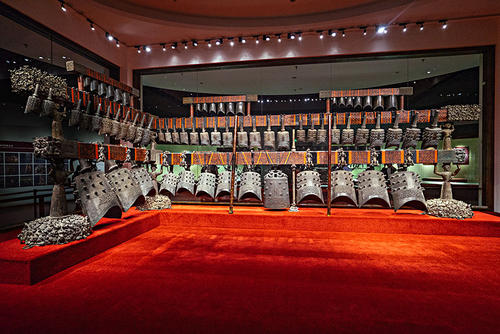
In the early Warring States Period (475BC-221BC). It was unearthed from the Tomb of Marquis Yi of the Zeng State in Suixian County in Hubei in 1978. It is 784 cm in length, 265 cm in width, and about 4.5 tons in weight. It is composed of 65 pieces of chime-bells and is divided into three layers. Each chime bell can play two different tones, which can be made by striking the middle or striking the side.
The most famous music playing is chime-bell performance, which is magnificent and shocking. It is performed by the Ancient Orchestra of Hubei Museum. The orchestra has been invited to many countries to perform, including the United States, Germany, France, and the United Kingdom.
| March to November | December to February | |
| Tuesday to Friday | 10:30-10:55; 14:00-14:25; 15:00-15:25 | 11:00-11:25;15:00-15:25 |
| Saturday and Sunday | 10:30-10:55; 11:30-11:55 14:00-14:25; 15:00-15:25 | 11:00-11:25; 14:00-14:25; 15:00-15:25 |
| Legal holidays | 10:30-10:55; 11:30-11:55; 12:30-12:55; 14:00-14:25; 15:00-15:25 | |
Zhu Dong (1388-1414), King Yingjing of the Ming Dynasty (1368-1644), could compose and perform the military exercise well. Princess Guo was his childhood sweetheart and adored him. One day, when they were playing together, Zhu Dong said he would marry Guo in the future and pointed to the plum vase with the four-love pictures on, saying this was the evidence. When they grew up, Zhu Dong married Guo, and the plum vase became their beloved thing.
The couple were both well matched and talented. Their affection was the envy of all people from the ordinary to the nobility. In fact, the couple usually stayed away from each other, but their romance was solid.
According to the history, Zhu Dong died young and Guo was very sad, and no one could comfort her. One day, Guo began to make up in front of the mirror, then drew a portrait of herself on the paper. She handed the picture to the maid, saying “when my kids grow up, show them this painting and tell them this is their mother”. Then, she pointed to the plum vase and said, “I should be buried with King Yingjing and with this plum vase”. After arranging all things, the grieved princess committed suicide.
No matter how time flies and no matter how the world changes, only true love can last forever. When unearthed, the plum vase was placed under the bed of the coffin of Princess Guo, which witnessed the tragic story of the princess dying for her husband.
Enter from the gate of the museum → the Hall of the Tomb of Marquis Yi of Zeng (1st floor)→ the Art of Earth and Fire Ancient Porcelain (2nd floor) →the Art of Lacquered Articles in the Qin and Han Dynasties (2nd floor)→ the Exhibition of Tomb of Prince Liangzhuang (2nd floor)→ Panlongcheng (2nd floor)→ the Hall of Yunxian Man (2nd floor)→ Exhibition of Ming and Qing Paintings and Calligraphic Works (2nd floor) →Luminaries in Hubei during a Century (4th floor)→Exit.
Take bus 14, 810, 402, 411, 552, 578, 701, or 709 and get off at the Provincial Museum Station.
By Subway
Take Line 4 and get off at the Dongting Station, and exit A.
By Taxi
Chinese: 请带我去湖北省博物馆。English: Please take me to Hubei Provincial Museum.
If you go to Hubei Provincial Museum from the center of Wuhan (New World Hotel), it takes about 30 minutes (about 30 yuan).
If you go to Hubei Provincial Museum from Wuhan Tianhe International Airport, it takes about 50 minutes (about 100 yuan).
If you go to Hubei Provincial Museum from Wuhan Railway Station, it takes about 20 minutes (about 30 yuan).
If you go to Hubei Provincial Museum from Wuchang Railway Station, it takes about 25 minutes (about 30 yuan).
